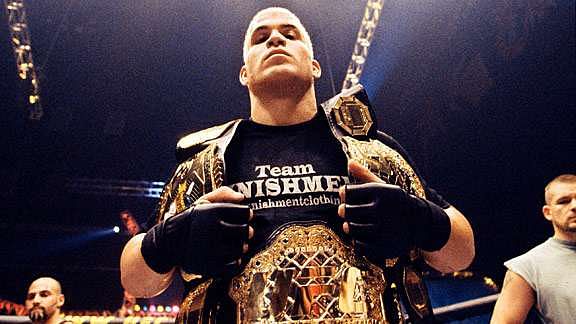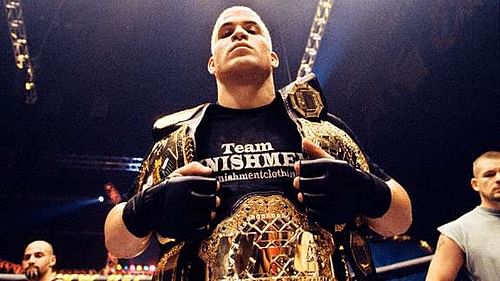
Pioneers of MMA: Tito Ortiz
Welcome to my new series for Sportskeeda, Pioneers of MMA. Every other week I’ll be looking at the career of one of the figures, who I feel has been pivotal to today’s juggernaut of a sport, exactly what they did to change the landscape, and how what they did still resonates today.
When it comes to pioneers, people usually think of the obvious names – the likes of Royce Gracie, Kazushi Sakuraba, and Maurice Smith, but today I’m looking at someone else.
He may not have introduced a new fighting style, nor was he the first man in MMA to play a pro-wrestling-inspired character. But Tito Ortiz was definitely a pioneer in his own right, and a lot of the moves he made in his career helped to change MMA entirely.
The beginning
Ortiz was introduced to the UFC way back in 1997 at UFC 13 to be exact. He’d been training under wrestling coach Paul Herrera, who was also involved in training the “original” Huntington Beach Bad Boy, Tank Abbott. Tito’s connections to Tank got him into the UFC as an alternate for the event’s Middleweight tournament.
After using his wrestling and ground striking to dispatch of Wes Albritton in the alternate match, Ortiz was given a chance to fight in the finals after Enson Inoue withdrew with an injury. Facing him was the far more experienced Guy Mezger, a student of Ken Shamrock’s Lion’s Den.
Tito was actually able to dominate Mezger in the early going, using a cradle to control him while landing knees to the top of the head, but after referee John McCarthy called a stoppage to check on a cut to Mezger, Tito made the error of shooting for a takedown with his neck out. Mezger caught him in a guillotine choke and forced him to tap out.
Over a year went by before Ortiz was seen again; this time fighting against another Lion’s Den representative, Jerry Bohlander. Bohlander had the reputation of someone who could deal with larger fighters – he’d tapped out both Olympic gold medalist Kevin Jackson and the obese giant Scott Ferrozo in previous UFC outings.
He could do nothing with Ortiz.
Tito was just too big, too strong and too good of a grappler for Bohlander to handle, and after a beatdown that went on for about 15 minutes, the fight was stopped.
Just two months later Tito was back, rematching Bohlander’s training partner Guy Mezger. This time around Ortiz had more experience and Mezger was no match for him. He was beaten in the same fashion as Bohlander – outmuscled, rag dolled and pounded into a TKO.
So here’s where Ortiz earns his first points as a legitimate pioneer. He wasn’t the best wrestler the UFC had seen, not even close – Tito wasn’t a Division I All-American even, and the UFC had showcased Olympic-level wrestlers like Mark Coleman and Kevin Jackson before.
No, the key to Tito’s success was his size. Fighting at Middleweight – 199lbs, under the old rules – Ortiz was the first man to really implement weight-cutting as part of his gameplan. He’d weigh in at the limit of 199lbs but then re-hydrate as far up as 220lbs, giving him a monstrous size advantage and allowing him to bully smaller foes like Bohlander.
Today of course weight cutting is commonplace, even on the amateur circuit, but before Tito, you fought at the weight you walked at.
